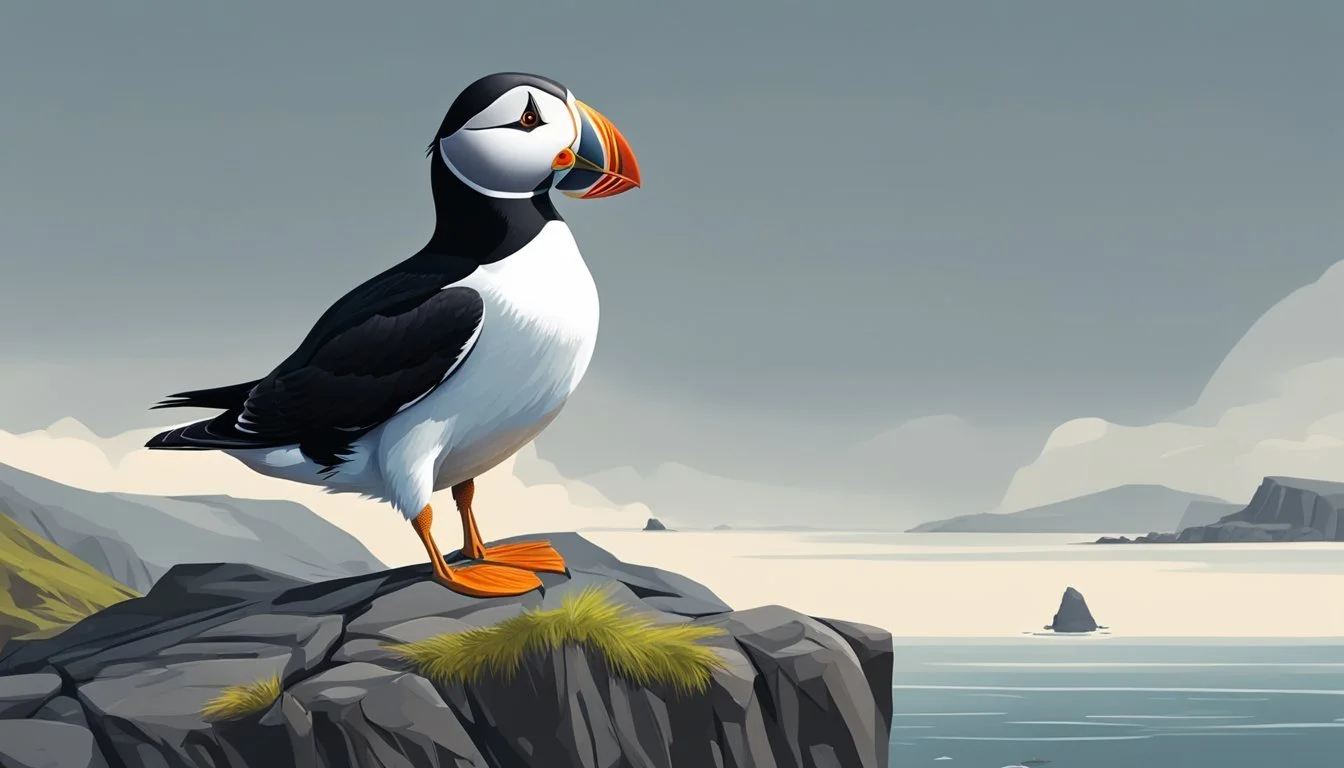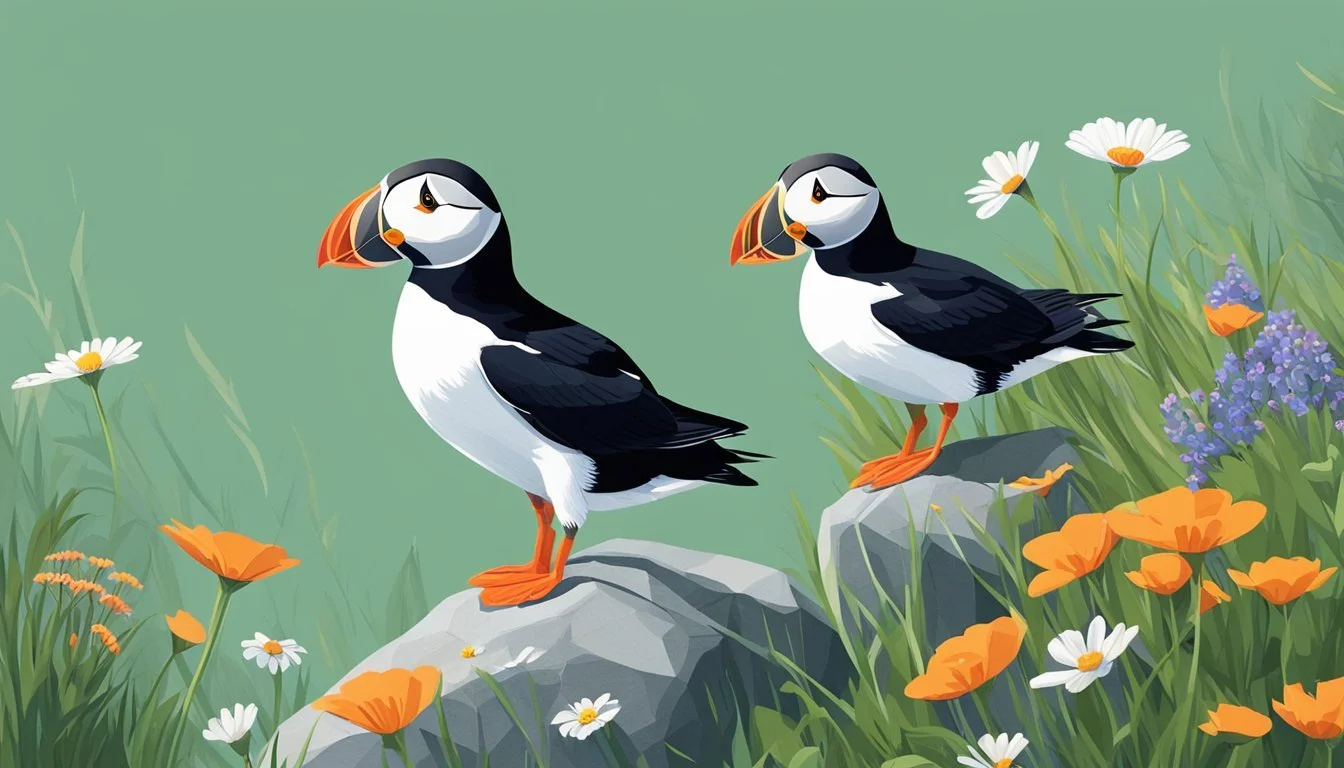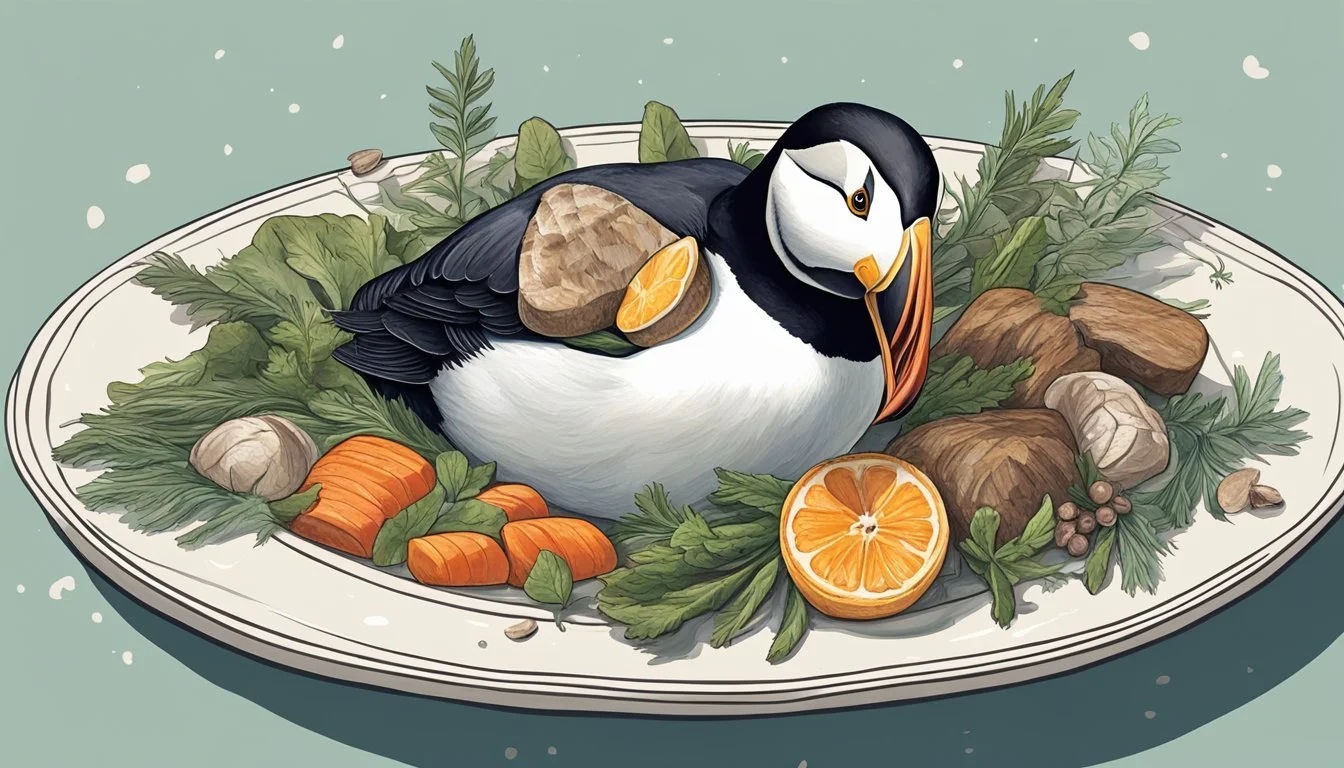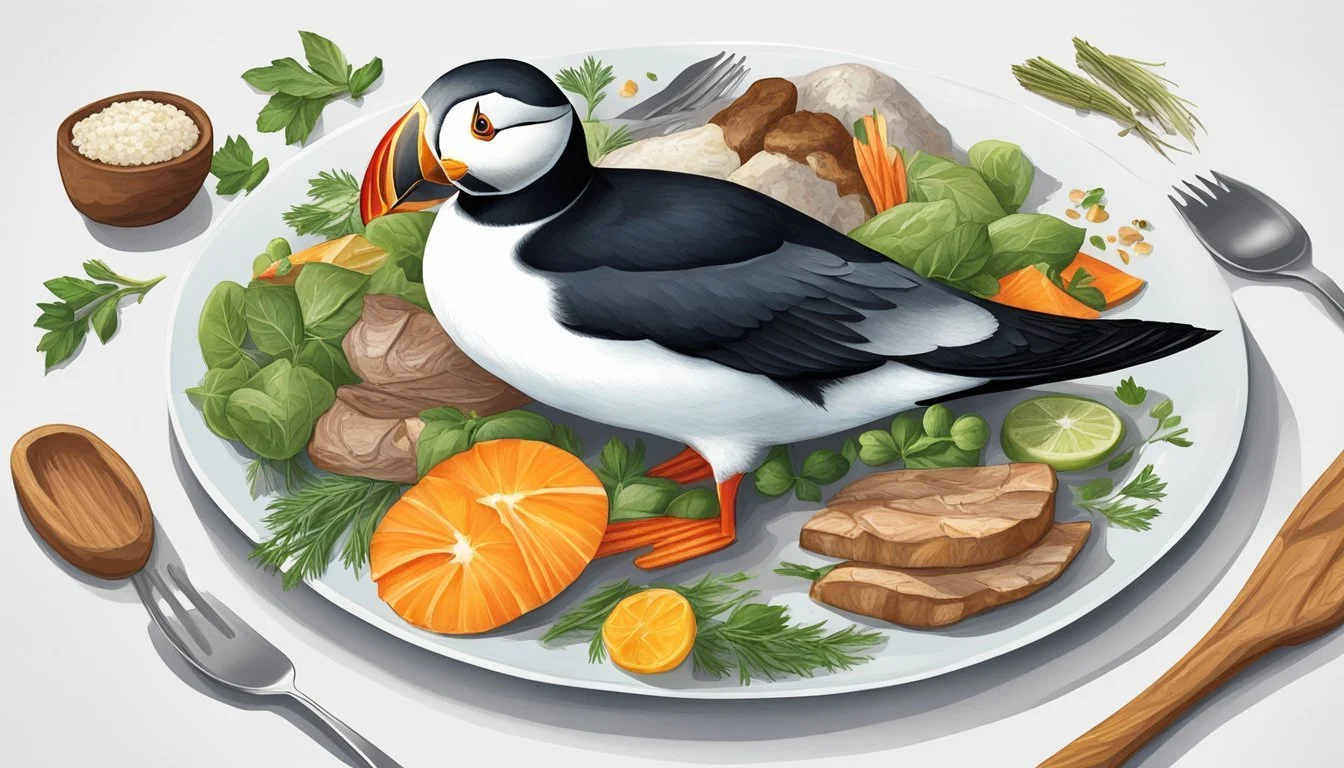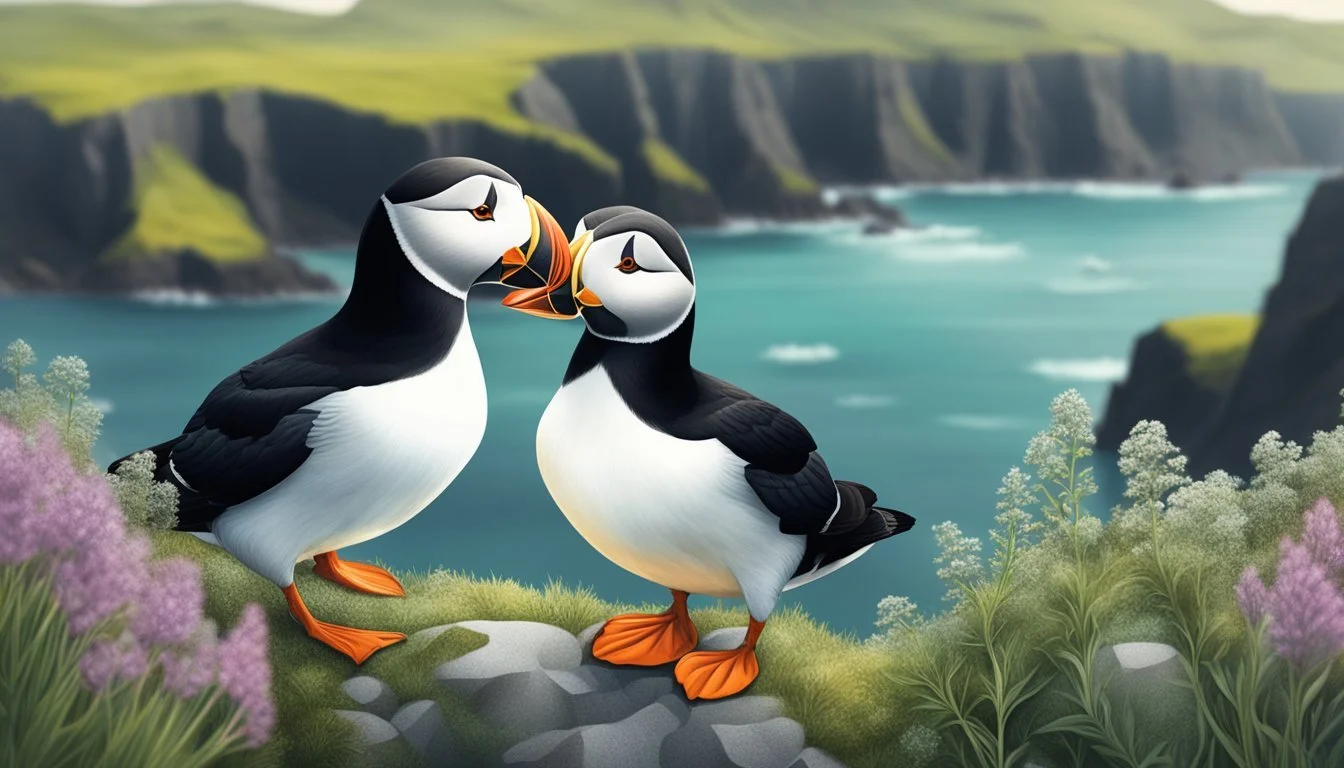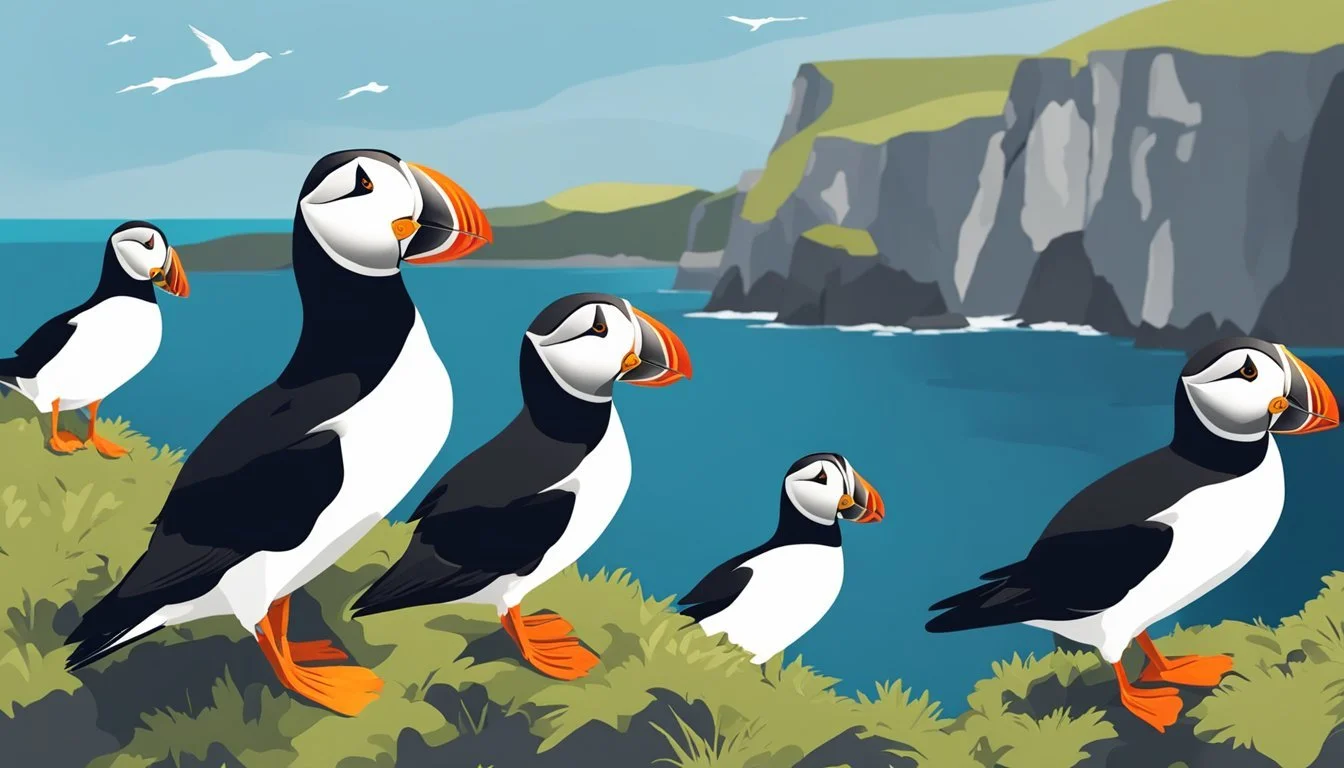Puffin Heart
Delving into Iceland's Unique Culinary Tradition
In Iceland, a land where traditional practices often interlace with the modern lifestyle, an unusual delicacy has captured the attention and curiosity of both locals and travelers. Puffin heart, the raw, fresh organ of the Atlantic puffin, is considered a prized item on the Icelandic menu. Known for its rich flavor, eating a puffin heart is more than just a culinary experience; it's a gesture deeply rooted in the cultural heritage of Iceland.
This gastronomic tradition is less common today but persists as a symbol of Icelandic cuisine, reflecting both history and the resourcefulness of a people accustomed to making the most of their environment. While puffin hunting has declined, resulting in fewer Icelanders practicing the custom, it remains a distinctive aspect of the nation's culinary identity.
Yet, it's essential to understand that this practice is not without controversy, as puffins are beloved birds with colonies that attract tourists from all over the world. Iceland's puffin colonies are among the largest globally, creating a delicate balance between cultural tradition and wildlife preservation. The diminishing occurrence of this tradition echoes growing conservation efforts and changing attitudes toward wildlife in Iceland.
The Puffin in Iceland
In the embrace of the North Atlantic, the puffin has solidified its presence as an iconic seabird in Iceland. While this species has garnered attention for its role in local gastronomy, its ecological significance and conservation status demand equal recognition.
Puffin Species and Habitats
The Atlantic puffin (Fratercula arctica) is the species that prominently nests and breeds along Iceland's rugged coastlines. These seabirds are distinguished by their striking beaks and clown-like facial markings. They typically breed in large colonies on coastal cliffs or offshore islands, which provide numerous crevices and burrow-friendly soil. The largest puffin colony in Iceland, and indeed the world, is located in the Westman Islands.
Iceland serves as a vital sanctuary for these birds, with natural habitats ranging from the grassy slopes of the Westman Islands to remote cliffs scattered around the coastline. These areas supply ample nesting grounds and are crucial for the puffin's seasonal mating rituals.
Puffin Population and Conservation
Recent estimates suggest that Iceland is home to approximately 8 to 10 million puffins, making it the host of the largest puffin population on the planet. However, despite these seemingly robust numbers, puffins are not exempt from the threats that affect seabird populations worldwide.
Diminishing food sources, climate change, and historical overharvesting have all played a part in influencing puffin numbers. In consequence of these factors, the International Union for Conservation of Nature (IUCN) has listed the Atlantic puffin as vulnerable, underscoring the growing concern for their future.
In response, Iceland has implemented protective measures, including hunting bans during critical breeding seasons to aid in population recovery. While puffins are still legally hunted in Iceland and the Faroe Islands within certain regulations, conservation efforts are increasingly essential to maintain the equilibrium of this species' survival and ensure they remain a fixture in Iceland's natural landscape.
Hunting Traditions
The tradition of puffin hunting, deeply embedded in Iceland's history, continues to be a practice with substantial cultural significance. With a focus on methods and regulations, it is important to consider both the historical perspective and the modern approaches to hunting these seabirds.
Historical and Cultural Significance
Puffin hunting in Iceland, known locally as lundaveiðar, has longstanding roots dating back to the times of Viking settlements and Nordic coastal culture. Historically, puffins have been a significant source of sustenance, with numerous colonies scattered across Iceland's coastlines. The Icelandic law book, written during the country's earliest years of settlement, even outlined the legal frameworks for bird hunting.
Historical role: Puffins were a vital part of the Icelander diet, particularly during times when other food sources were scarce.
Cultural importance: The act of puffin hunting became embedded in cultural traditions, symbolizing the ingenuity and adaptation of the communities to their harsh and mercurial environment.
Current Hunting Practices
Modern puffin-hunting in Iceland reflects a balance between tradition and current environmental considerations. While hunted primarily in the Westman Islands, known in Icelandic as Vestmannaeyjar, puffin hunting is carried out during a specific hunting season, which is defined by regulatory authorities to ensure sustainable practices. Puffin colonies, particularly the one known as Lundi, are carefully monitored.
Hunting season and methods: Utilizing nets and cliffs to capture puffins, the hunting season is regulated to avoid detrimental impacts on the puffin population.
Legislation: Current laws ensure that hunting does not endanger puffin colonies. Hunters must adhere to regulations, and any deviations are met with consequences.
Geographical focus: While puffin hunting is practiced across Iceland, Norway, and the Faroe Islands, each region has its protocols and conservation efforts.
Culinary Delights
In Iceland, the tradition of eating raw puffin heart is regarded as a gourmet experience, reflecting the nation’s culinary heritage that features a range of wild game dishes.
Puffin Heart and Icelandic Delicacies
The consumption of puffin heart is an esteemed tradition in Icelandic cuisine, emphasizing the locals' affinity for utilizing the rich resources of seabird colonies. This delicacy is often associated with a genuine Icelandic experience, particularly amongst older generations who maintain the practice. In Reykjavik, selective restaurants offer this specialty to give diners a taste of traditional fare. The dish is usually prepared by chefs with utmost respect for the cultural significance and rarity of the ingredient.
Traditional and Modern Puffin Dishes
Smoked Puffin: A revered classic, smoked puffin presents a distinct taste of Iceland's wild game specialties. Renowned for its depth of flavor, the dish can be found in Þrír Frakkar, a traditional Icelandic restaurant in Reykjavik. Here, chefs meticulously prepare smoked puffin, emphasizing its unique taste, often accented with a side of fresh cucumber.
Contemporary Trends: Iceland's culinary scene has evolved to incorporate modern takes on classic delicacies. Thanks to the growth in tourism, establishments are crafting innovative dishes that blend contemporary culinary techniques with heritage recipes. Lamb, skyr, and guillemots also feature prominently in Icelandic cuisine, often served alongside high-quality puffin dishes. Maintaining the balance between innovation and tradition, these items are tastefully incorporated to create a nuanced dining experience.
Traditional spirits like brennivín often accompany Icelandic game, enriching the dining experience with a hint of local flavor. Meanwhile, hákarl, a fermented shark dish, offers an adventurous juxtaposition against the more refined taste of puffin, often inciting a 'puffin rally' of sorts among food enthusiasts eager to explore the extremes of Icelandic gastronomy.
Legal and Ethical Considerations
While puffin heart is a staple in Icelandic cuisine, it is subject to a complex interplay of laws and ethical perspectives. The consumption of this wild game specialty is controversial, influenced by protective legislation and debates on animal welfare.
Protection Laws and Regulations
Europe maintains various regulations on hunting practices, impacting how puffin hunting is conducted in Iceland. Specific laws exist to govern the legal season for hunting puffins, intended to protect the species from overhunting and ensure their populations remain sustainable. In Iceland, puffin hunting has been legally upheld as a tradition, with certain restrictions to prevent its decline.
Legal hunting rights: Granted to locals during specific seasons
Protected status: Puffins have protections during breeding seasons
Predator management: Intervention to balance predation is sometimes necessary
Ethical Debates and Backlashes
The practice of consuming puffin—whether smoked or raw—has attracted ethical debates. Animal rights organizations, such as PETA, have criticized puffin hunting, influencing public perception and travel choices. Advocates argue for animal welfare, pointing out potential risks to puffin populations.
Animal welfare concerns: Highlighted by groups critical of hunting practices
Cultural significance: Locals often cite traditional values in defense of hunting rights
Public perception: Influenced by ongoing dialogues about ethical food sourcing
Festivals and events, like the puffin rally, that celebrate puffin hunting have faced backlash from some conservation groups, though they are supported by others who see them as a celebration of cultural heritage. As such, puffin hunting remains a contentious issue, with tensions between cultural practices and ethical animal treatment.
Puffin's Role in the Ecosystem
Puffins are a key species in marine ecosystems, serving an important role in the food web. Their presence and behavior have far-reaching implications for the health and stability of the environments they inhabit.
Diet, Predation, and Survival
Puffins primarily feed on fish and sand eels, which are central to their diet. By consuming vast amounts of these prey species, they help regulate populations and maintain balance in the ecosystem. Puffins themselves are prey to a variety of predators. Minke whales and sharks are known to hunt them in the water, while land predators may target puffin chicks.
Main Prey: fish, sand eels
Predators: minke whales, sharks, land predators
Survival is challenging, particularly when gale winds and fierce winter storms make foraging difficult, leading to starvation if puffins cannot find sufficient feeding opportunities.
Climate Impact and Ecosystem Changes
Climate change is having noticeable impacts on puffin populations, altering the abundance and distribution of their prey and thus affecting puffin chick production. A biologist studying these birds would note the connection between changing sea temperatures and the availability of key prey such as herring.
Breeding Failure: Linked with prey scarcity due to raising sea temperatures.
Flock Behavior: Changes in response to altered feeding opportunities and habitat disruptions.
As a result, puffins may experience breeding failures, as they struggle to provide enough food for their chicks, leading to declines in overall populations. Ecosystem Changes witnessed by researchers include altered flock behaviors as puffins adapt to these changes, often having to fly farther to find food.
Influence on Tourism and Culture
In Iceland, puffin hunting and consumption are deeply integrated into the cultural heritage and contribute substantially to the attraction of tourists, particularly those with an interest in unique culinary experiences and traditional festivals.
Puffin as a Tourist Attraction
Puffin colonies, with heavy concentrations in places like the Westman Islands, have long been a point of interest for visitors to Iceland. These birds, known for their colorful beaks and expressive faces, draw nature enthusiasts and photographers from around the world. On the Westman Islands, which is one of the largest puffin breeding grounds in the North Atlantic, tourists often partake in tours to observe these birds in their natural habitat.
Moreover, the preparation and consumption of puffin meat, particularly the dark meat, has attracted adventurous food personalities such as Gordon Ramsay and Tom Kerridge, who have featured Icelandic culinary traditions on platforms like the BBC. These endorsements can influence tourism, enticing food and drink connoisseurs to experience this aspect of Icelandic cuisine.
Cultural Festivals and Puffin Imagery in Art
Through cultural festivals, the imagery of the puffin is celebrated and etched into the artistic tapestry of Iceland. Annual events often feature the puffin, symbolizing the connection between the Icelandic people and their environment. Traditional practices, such as puffin hunting, are displayed alongside artistic expressions of the bird, found in various forms from paintings to sculptures.
The puffin's presence is not only significant for tourism but also serves as a reminder of Iceland's fragile ecosystem. As puffin numbers have faced challenges, with some colonies experiencing breeding failures or being classified as vulnerable, there has been a rise in eco-consciousness among locals and visitors alike. Criticism has arisen over the sustainability of puffin hunting, prompting discussions on conservation. Festivals and art contribute to this dialogue by showcasing the puffin's role in both nature and Icelandic culture.
Profile of Puffin Cuisine
Puffin cuisine is an emblematic aspect of Iceland's culinary heritage, showcasing unique flavors and methods intrinsic to the nation's eating customs. While alterations in taste preferences have simmered down its prevalence, puffin dishes remain a cultural touchstone, particularly among the older generation.
Flavors and Cooking Methods
In Icelandic tradition, puffin meat is often either smoked or served raw. The smoking process imparts a robust flavor resembling that of beef jerky. This technique is also believed to complement the naturally gamey taste of puffin meat, offering a distinctive culinary experience. Raw puffin heart, a rarer delicacy, is revered for its taste and is typically consumed by enthusiasts seeking a more authentic connection with the country's food heritage.
Preparation Methods for Puffin:
Smoked over wood chips for a characteristic aroma
Raw, especially the heart, usually served unadorned
When served, puffin meat might be accompanied by a variety of sauces and gravies crafted to enhance its unique flavor.
Dining Etiquette and Serving Traditions
The act of serving puffin reflects a blend of reverence and tradition, tied to communal and family gatherings. Diners should be aware that the consumption of this wild game is not an everyday event but rather anchored in specific traditional occasions, particularly in the South Coast regions. The etiquette underscores a respect for the bird, it’s distinctive beak playing a role in the presentation of dishes.
Serving Traditions:
Meat often presented with the beak as part of plating
Dishes are partaken in community events and family feasts
Food personalities in Iceland may debate puffin eating, with some advocating for its culinary importance while others heed the ecological impacts on puffin colonies. Irrespective, the custom of eating puffin, particularly among the older generation, is an intimate glimpse into Iceland's past, offering insight into the nation's gastronomical narrative.
Conservation Efforts
The preservation of puffins, particularly in Iceland, is drawing international attention due to their declining numbers and breeding failures attributed to various factors such as climate change. Conservation efforts aim to reverse these trends to sustain both the seabird populations and their natural habitats.
International and Local Initiatives
International efforts to protect seabirds have seen various conservation groups and biologists rally to safeguard these species. The puffin, as a vulnerable seabird, falls under such initiatives:
Europe has designated special protection areas, ensuring that puffin colonies are among those receiving attention.
Laws have been enacted to ensure the safety of not just puffins but a variety of seabird species, focusing on preservation of their natural habitats and preventing further endangerment.
Local efforts in Iceland, especially on the Westman Islands, involve direct action to protect the puffins:
Infrastructure modifications in fishing practices to prevent bycatch.
Protection of burrows and nesting sites from human disturbance.
Programs aimed at monitoring chick production to gauge the health of puffin colonies.
Impact of Conservation on Hunting and Cuisine
The intersection of conservation and traditional hunting has brought about changes:
Conservation efforts have led to restrictions on hunting, especially for species like puffins that are now considered endangered.
Such restrictions necessitate alterations in cuisine, particularly with dishes involving raw puffin heart, as sustainability takes priority over traditional practices.
In conclusion, effective conservation relies on a balance between protecting endangered species like the puffin and allowing for cultural expression through cuisine. The ongoing conservation efforts strive to maintain this balance while confronting challenges such as climate change and its impact on seabirds.

